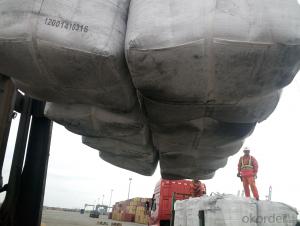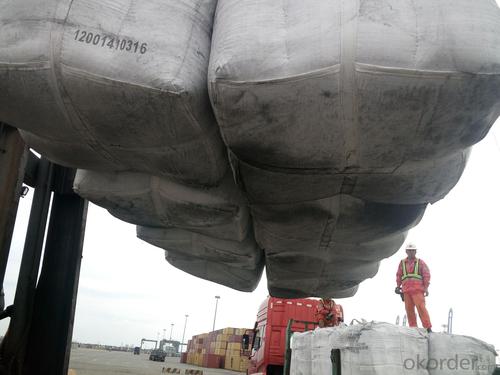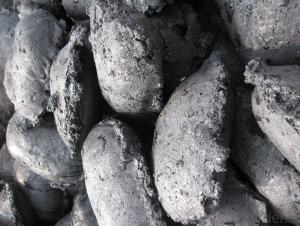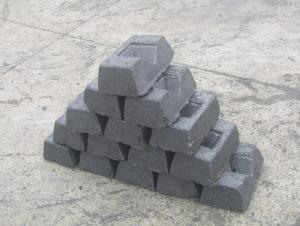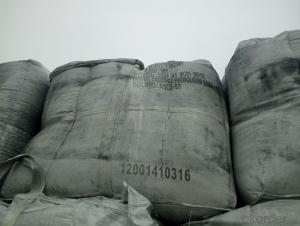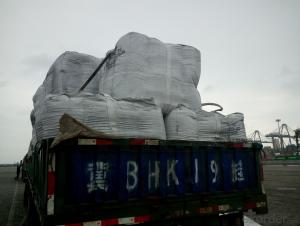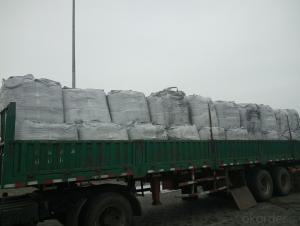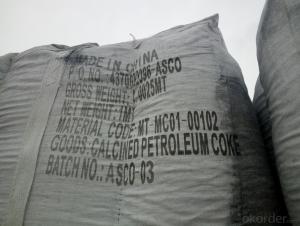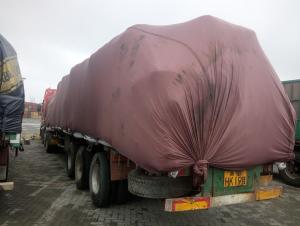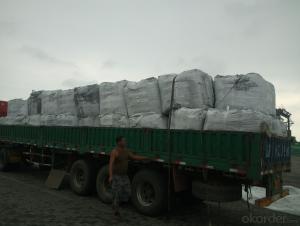Calcined Pitch Coke with Ash 0.5 percent max
- Loading Port:
- Tianjin
- Payment Terms:
- TT OR LC
- Min Order Qty:
- 21 m.t.
- Supply Capability:
- 8000 m.t./month
OKorder Service Pledge
OKorder Financial Service
You Might Also Like
Introduction
Pitch Coke/Coal Tar Pitch is a kind of black brittleness and blocky piece, lustrously at normal temperature. It has special odour and poisonous and can be easily flame when melting, second-grade inflammable solid.
Pitch Coke/Coal Tar Pitch is obtained from powerfully processed coal tar. Compared to petroleum asphalt, the adhesiveness is better. Coal Tar Pitch is high quality tar production with high fixed carbon. It has excellent adhesion, waterproofing and resistance against seawater, oil and various chemicals. In these properties, it is much better than petroleum asphalt tar.
It can be used to produce painting, electrode, pitch coke, and tar felt. It also can be used as fuel and the raw material of asphalt carbon black.
Features:
The morphology, chemistry and crystallinity of recarburisers have a major impact on the overall casting cost. The combined application and cost benefits, which are derived through the use of Desulco, enable foundries to manufacture castings in a highly cost effective manner.
reduces
Recarburiser consumption
Power consumption
Inoculant consumption
MgFeSi consumption
Furnace refractory wear
Scrap rate
Tap to tap time
Slag inclusions risk
Chill
increases
Casting microstructure
Productivity
Process consistency
Carbon Recovery
Compared with calcined petroleum coke, acetylene coke and
graphite electrode scrap, Desulco yields the highest carbon
recovery and fastest dissolution time
Specifications:
CPC | |||
F.C.% | 98.5MIN | 98.5MIN | 98MIN |
ASH % | 0.8MAX | 0.8MAX | 1MAX |
V.M.% | 0.7 MAX | 0.7 MAX | 1 MAX |
SULFUR % | 0. 5MAX | 0. 7MAX | 1MAX |
MOISTURE % | 0.5MAX | 0.5MAX | 1MAX |
Pictures:
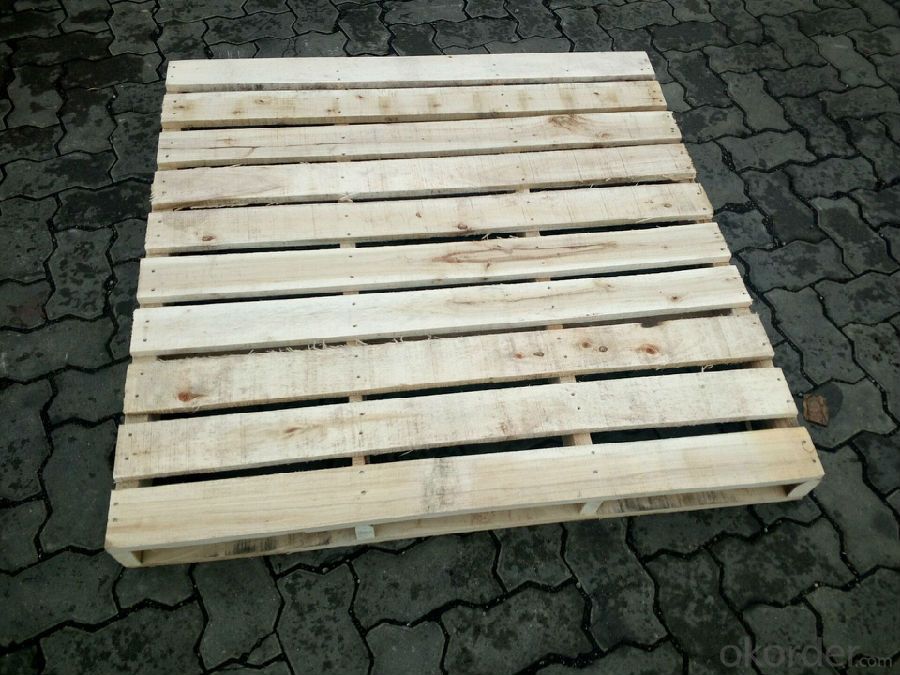
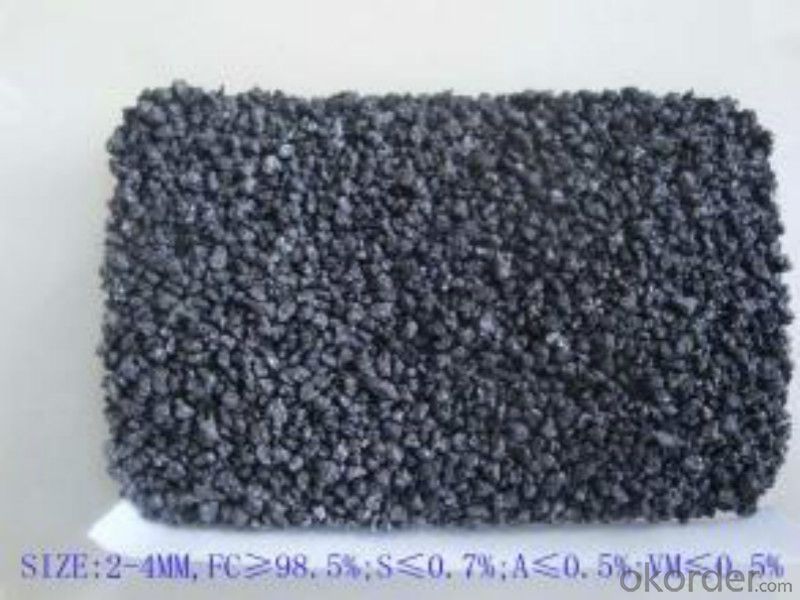

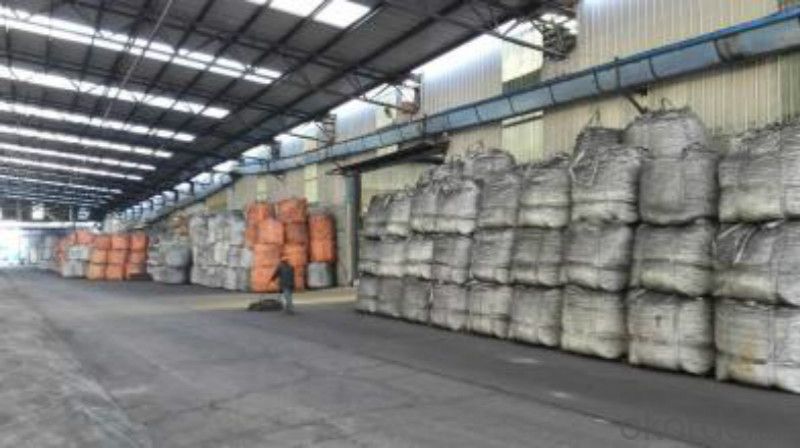
FAQ:
1.MOQ:2 Containers |
2.Size:1-3mm,1-5mm,2-6mm,3-5mm and as the customer's requirement |
3.Packing: 1 ton jumbo bag or 25kgs paper in bag |
4.Payment:T/T or L/C at sight |
5.Delivery time: within 15 days after receiving the deposit |
6.Usage: it is as carbon raiser,widely used in steelmaking,casting,casting iron,steel foundry,aluminum metallury. |
- Q: How does carbon cycle through living organisms?
- The carbon cycle is the process by which carbon is exchanged and recycled among various components of the Earth, including living organisms. Carbon enters the living organisms primarily through the process of photosynthesis. During photosynthesis, plants and some other organisms use sunlight, carbon dioxide, and water to produce glucose and oxygen. Plants take in carbon dioxide from the atmosphere and convert it into glucose, which is used as a source of energy for their growth and development. Some of the glucose is used immediately by the plants, while the excess is stored as starch and other carbohydrates. This is how carbon is initially incorporated into the living organisms. Consumers, such as animals, obtain carbon by consuming plants or other animals that have consumed plants. When animals consume plants, they break down the stored carbohydrates into glucose, releasing carbon dioxide back into the atmosphere through the process of cellular respiration. The glucose is used by animals as a source of energy for their own metabolic processes. When animals and plants die or produce waste, their organic matter decomposes, and this decomposition releases carbon back into the environment. Some of this carbon is converted into carbon dioxide through the process of decomposition, which is then released into the atmosphere. However, a significant portion of the carbon is converted into organic compounds by decomposers, such as bacteria and fungi, which can be further utilized by other living organisms. This cycle continues as the carbon is constantly being exchanged between the atmosphere, living organisms, and the Earth's various reservoirs, such as the oceans and soil. Carbon can also be stored for longer periods in the form of fossil fuels, such as coal, oil, and natural gas. When these fossil fuels are burned for energy, carbon dioxide is released into the atmosphere, contributing to the greenhouse effect and climate change. Overall, the carbon cycle is a complex process that involves the continuous exchange and transformation of carbon among living organisms and the environment. It is crucial for maintaining the balance of carbon in our ecosystem and plays a significant role in regulating the Earth's climate.
- Q: How does carbon affect the formation of droughts?
- Carbon does not directly affect the formation of droughts. However, increased carbon dioxide levels resulting from human activities contribute to climate change, which can lead to changes in precipitation patterns and increased likelihood of drought conditions in certain regions.
- Q: How is carbon used in the production of diamonds?
- Carbon is a key component in the production of diamonds as it is the primary element that makes up the structure of a diamond. Diamonds are formed deep within the Earth's mantle, where extreme heat and pressure cause carbon atoms to bond together in a unique crystal lattice formation. This process, known as carbon crystallization, occurs over millions of years. One method of producing synthetic diamonds involves recreating these intense conditions in a laboratory. High-pressure, high-temperature (HPHT) machines are used to apply immense pressure and heat to a small piece of carbon, such as graphite. This stimulates the natural process that occurs in the Earth's mantle, allowing the carbon atoms to rearrange themselves and form a diamond. Another method, known as chemical vapor deposition (CVD), involves the use of a hydrocarbon gas, such as methane, in a controlled environment. The gas is introduced into a chamber and heated, causing the carbon atoms to separate from the hydrogen atoms. These carbon atoms then settle on a substrate, such as a diamond seed, and gradually build up layer by layer, forming a diamond. In both methods, carbon serves as the building block for the diamond's structure. By manipulating the conditions in which carbon atoms are subjected to extreme heat and pressure, scientists and manufacturers can control the growth and formation of diamonds. This allows for the production of synthetic diamonds that possess the same physical and chemical properties as natural diamonds. Overall, carbon is essential in the production of diamonds as it is the fundamental element that enables the formation and growth of these precious gemstones.
- Q: Appearance, hardness, electrical conductivity, use of carbon 60
- C60 does not normally conduct electricity because C60 is so large that it can put other atoms into it and affect its physical properties, so it cannot be electrically conductiveUsed to strengthen metalImprove the metal material strength by alloying, plastic deformation and heat treatment, one of the ways to strengthen the interaction through geometry, such as coke carbon dispersed in the metal, carbon and metal exchange position in the crystal lattice, can cause plastic deformation of metal, carbon and metal carbide particles that can make the metal enhanced. In the enhancement of metal materials, the effect of C60 ratio of carbon in coke is better, this is because the C60 is higher than the smaller particles, active carbon, particle size of C60 with metal carbide dispersion effect is 0.7nm, and the particle size of carbon and metal carbide dispersion effect the body is 2 m ~ 5 m, has a larger difference in enhancing the role of the metal.Used as a new catalystIn C60, the electronic structure of chemists began to explore the possibility of.C60 catalyst for C60 with olefin, with transition metal (such as platinum and nickel metal) to form a series of complexes. For example C60 and platinum, osmium can be combined into {[(C2H5) 3P]2Pt}C60 and C60OsO4 (four butylpyridine) and other coordination compounds and they are likely to become the efficient catalyst.Japanese researchers Toyohashi University of science and technology of the synthesis of highly catalytic activity of palladium Pt synthesis researchers and C60 compound C60Pd6. China Wuhan University (PPh3) 2C60 (PPh3 three, triphenylphosphine) for hydrosilylation reaction with high catalytic activity.
- Q: What materials can be carbonitriding?
- Low temperature carbonitriding for high alloy tool steel, high-speed steel tools, etc., in temperature carbonitriding is under great pressure not only in carbon steel wear parts, high temperature carbonitriding is mainly used for medium carbon steel and alloy steel under great pressure.
- Q: How does carbon impact the prevalence of droughts?
- Carbon, specifically in the form of carbon dioxide (CO2) emissions, plays a significant role in the prevalence of droughts. The increase in carbon levels in the atmosphere contributes to global warming, which in turn affects the overall climate patterns worldwide. When carbon dioxide is released into the atmosphere through human activities such as burning fossil fuels and deforestation, it acts as a greenhouse gas. Greenhouse gases trap heat from the sun and prevent it from escaping back into space, causing the Earth's temperature to rise. As the global temperature increases, it leads to changes in precipitation patterns and evaporation rates. Warmer temperatures accelerate evaporation, causing more water to evaporate from lakes, rivers, and soil. This increased evaporation coupled with altered precipitation patterns results in drier conditions and reduced water availability in certain regions. Additionally, the rising temperatures contribute to the intensification of the water cycle, causing more extreme weather events. This includes more frequent and severe droughts, as well as intense rainfall in some areas, leading to increased risks of floods. Furthermore, carbon emissions also contribute to changes in atmospheric circulation patterns, such as the weakening of the jet stream. The jet stream is responsible for steering weather systems, including rain-bearing weather fronts, across the globe. When it weakens, weather systems tend to become stagnant, resulting in prolonged periods of drought in certain regions. Overall, the increased levels of carbon in the atmosphere due to human activities have a direct impact on global warming and climate change. These changes in climate patterns and atmospheric circulation, combined with the intensification of the water cycle, significantly influence the prevalence and severity of droughts worldwide. Therefore, reducing carbon emissions and mitigating climate change is crucial in addressing and minimizing the impacts of droughts on ecosystems, agriculture, and human populations.
- Q: Is there any difference between carbon plate and universal board?
- Moreover, due to the characteristics of the rolling process, the mechanical properties of the steel plate vary greatly in the rolling direction and other directions (anisotropy), especially the impact power index is more obvious.In addition, the industry often encountered "cold-rolled carbon structural steel plate", "high-quality carbon structural steel plate" and so on, we should pay attention to distinguish between, do not mix.
- Q: What are fossil fuels and how are they formed?
- Fossil fuels are natural resources that are formed from the remains of ancient plants and animals. They are non-renewable sources of energy that have been used by humans for centuries. The three main types of fossil fuels are coal, oil, and natural gas. The formation of fossil fuels begins with the organic matter that comes from plants and animals. Over millions of years, this organic matter becomes buried deep within the Earth's crust. The process of fossilization occurs as layers of sediment build up over time, putting pressure and heat on the organic matter. In the case of coal, the organic matter is mostly plant material that has been compacted and heated over time. As the pressure and temperature increase, the plant material undergoes a chemical transformation, gradually turning into coal. The formation of oil and natural gas is slightly different. It starts with the remains of tiny marine microorganisms, such as plankton, that have settled at the bottom of ancient oceans. Over time, these organic materials become buried under layers of sediment and are subjected to immense heat and pressure. Under these conditions, the organic matter gets transformed into a mixture of hydrocarbons, which is the main component of oil and natural gas. The oil and gas then migrate through porous rocks until they are trapped by impermeable layers, forming oil or gas reservoirs. Overall, the formation of fossil fuels is a slow geological process that takes millions of years. It requires specific conditions of heat, pressure, and burial to convert the organic matter into coal, oil, or natural gas. Due to their limited availability and the environmental impact of their combustion, there is an increasing focus on transitioning to renewable energy sources as a more sustainable alternative.
- Q: How does deforestation contribute to carbon emissions?
- The role of deforestation in contributing to carbon emissions is significant. When forests are cleared or burned, the carbon stored in trees and vegetation is released into the atmosphere as carbon dioxide (CO2), a greenhouse gas that contributes to global warming. Forests act as natural carbon sinks, absorbing CO2 from the atmosphere through photosynthesis. Trees and plants convert CO2 into oxygen and store the carbon in their trunks, branches, leaves, and roots. This process helps regulate the Earth's climate by reducing the concentration of CO2 in the atmosphere. However, deforestation disrupts this natural carbon storage system. The carbon once stored in trees and vegetation is released back into the atmosphere, increasing the concentration of CO2. Burning forests exacerbates this process, releasing even larger amounts of carbon through the combustion of trees and plant material. The loss of forests also leads to a decrease in biodiversity and the destruction of habitats for numerous species, which disrupts the delicate balance of ecosystems. As a result, these ecosystems become less efficient at absorbing and storing carbon, further contributing to increased carbon emissions. Moreover, deforestation indirectly contributes to carbon emissions through various means. For example, when trees are cleared, the exposed soil is exposed to sunlight and heat, causing it to dry and release stored carbon. Additionally, deforestation often leads to the conversion of land for agricultural purposes, such as livestock farming or palm oil plantations, which can increase methane emissions, another potent greenhouse gas. To summarize, deforestation contributes to carbon emissions by releasing stored carbon, disrupting the natural carbon storage system, and indirectly contributing to the release of other greenhouse gases. It is crucial to address deforestation and promote sustainable land management practices to mitigate the effects of climate change and reduce carbon emissions.
- Q: What is the difference between carbon nanomaterials and nano carbon materials?
- Carbon nanomaterials are carbon materials with at least one dimension less than 100nm in dispersed phase scale. The dispersed phase can be composed of either carbon atoms or heterogeneous atoms (non carbon atoms), or even nanopores.
Send your message to us
Calcined Pitch Coke with Ash 0.5 percent max
- Loading Port:
- Tianjin
- Payment Terms:
- TT OR LC
- Min Order Qty:
- 21 m.t.
- Supply Capability:
- 8000 m.t./month
OKorder Service Pledge
OKorder Financial Service
Similar products
Hot products
Hot Searches
